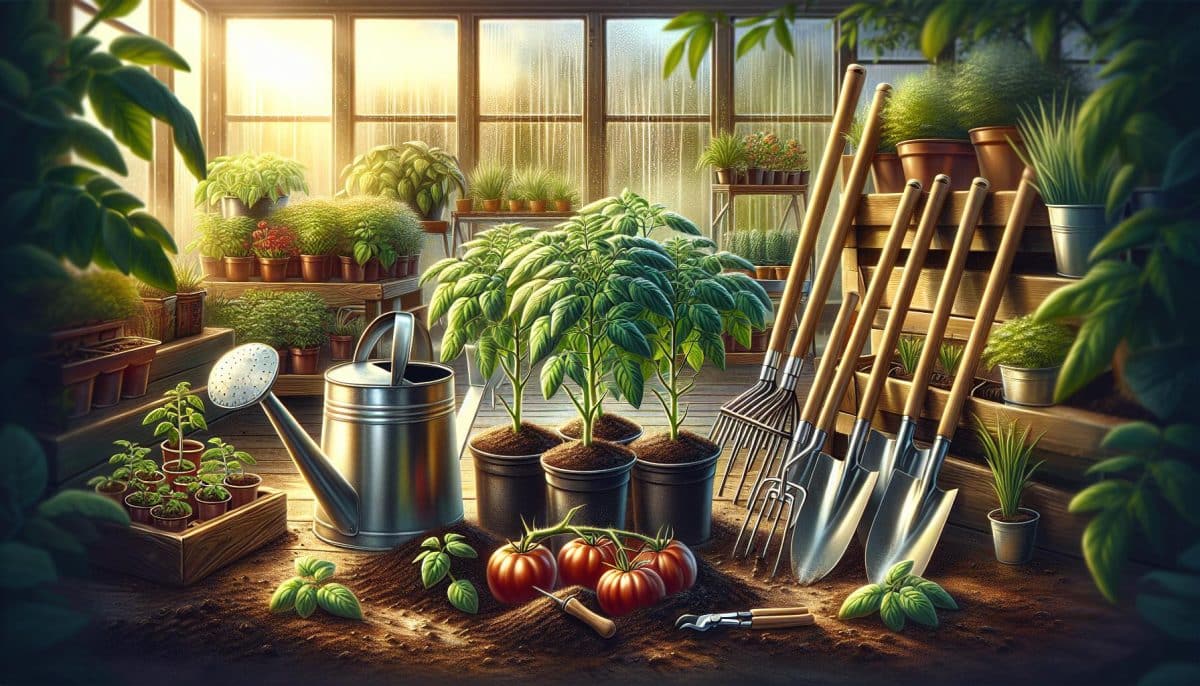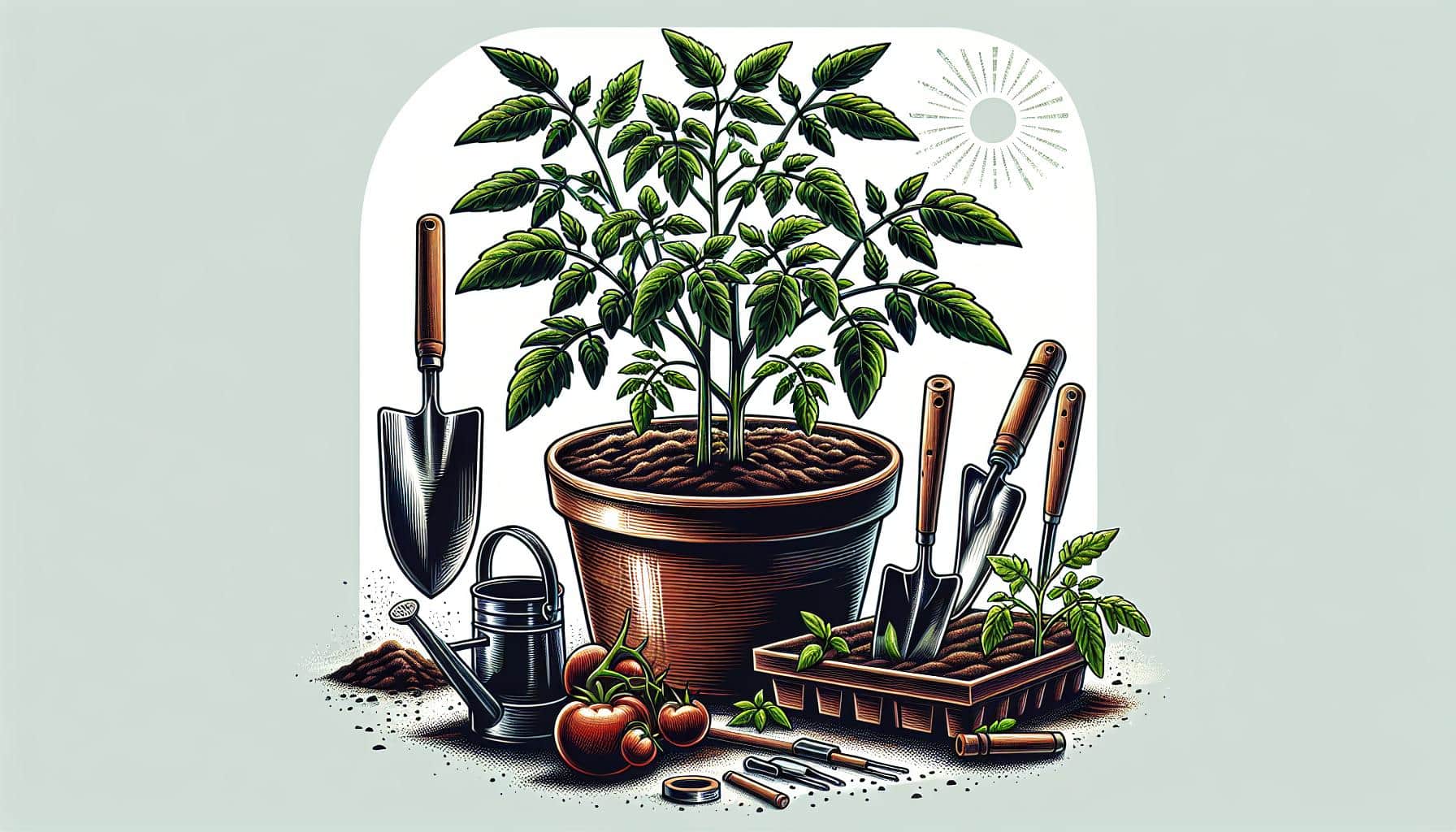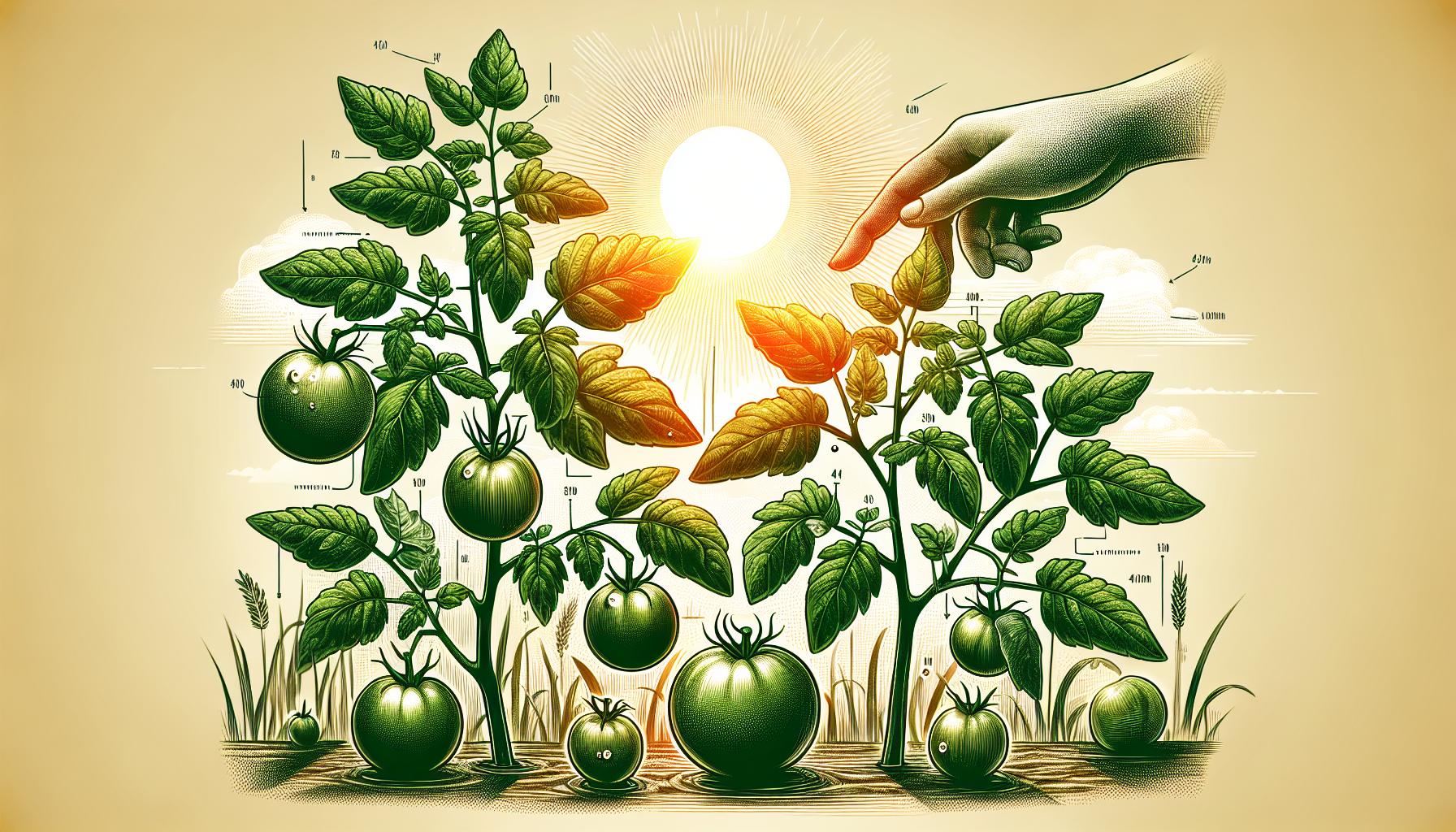
Growing tomatoes is a rewarding experience, but it’s not just about patience; it’s about technique. If you’re eager to savour that first juicy bite sooner, you’re in the right place. With a few expert tips, you’ll learn how to accelerate your tomato plants’ growth and enjoy a quicker harvest.
Understanding the needs of your tomato plants is key to their speedy development. Proper sunlight, water, and nutrition can make all the difference between a slow-growing plant and a robust one ready to fruit. Let’s jump into the essentials of fast-tracking your tomato growth, ensuring you get the best yield in the shortest time possible.
Choose the Right Tomato Variety
When pursuing a bountiful and quick harvest of tomatoes, selecting the correct variety is paramount. Fast-growing tomato varieties are key to achieving an early yield. Here are a few you’ll want to consider:
- ‘Early Girl’: Living up to its name, this variety is prized for its speed, able to produce fruit in as little as 50 days.
- ‘Siberian’: With an astonishing ability to fruit at 48 days, Siberian tomatoes are tough and perfect for cooler climates.
- ‘Glacier’: Cold-resistant and quick-maturing, Glacier tomatoes can be ready to pick within 55 days.
Tomato plants can be broadly categorized into two groups: determinate and indeterminate. Determinate tomatoes, often called bush tomatoes, grow to a certain height and then stop, producing all their fruit in a short burst. Indeterminate tomatoes, on the other hand, continue growing and producing tomatoes throughout the growing season.
Here’s how these types can impact your garden’s productivity:
- Determinate: Suitable for those who prefer a large harvest at once, perfect for making sauces and canning.
- Indeterminate: Ideal if you’d like a continuous supply of fresh tomatoes right from the garden to your table.
When you’re looking to speed up your harvest, keep an eye out for hybrid varieties. Developed for vigor and disease resistance, these types often offer quicker times from planting to picking. Always check the seed packet or plant tag; it will usually indicate the number of days to maturity, which can serve as a guide for your schedule.
Remember, each variety has its own set of requirements for optimal growth. Some may need more sun than others, or could be more sensitive to cold temperatures. Be sure to research the specific needs of the variety you choose to provide the best care and achieve the fastest growth. By selecting the most appropriate tomato variety for your climate and needs, you’ll enjoy the rewards of a plentiful tomato crop that arrives earlier than expected.
Start with Healthy Seedlings

Starting with healthy seedlings is crucial for growing tomato plants quickly. Vigorous seedlings have a better chance of thriving and maturing faster compared to weak or diseased ones.
Source Quality Plants When you’re on the hunt for seedlings, always look for plants that are:
- Dark green in colour
- Sturdy and squat rather than tall and leggy
- Free of spots, pests, and diseases
Remember, a few healthy and robust plants will far outweigh the quantity of weaker ones in the long run. Healthy seedlings translate into stronger plants, which means you’ll be on track for a bountiful harvest.
Transplant with Care When transplanting, handle the seedlings gently. Disturbing the roots as little as possible will help them recover from the shock of transplanting and get back to growing. Here’s what you should do:
- Water the seedlings well before transplanting
- Prepare a hole deep enough to bury up to the first set of true leaves – Carefully loosen the soil around the roots when removing them from the container
By offering the right conditions immediately after transplanting, your tomato plants stand a better chance of thriving from the outset. With the right beginning, these plants are more likely to grow at an accelerated pace.
Acclimatise Seedlings to Outdoor Conditions Hardening off your seedlings is a step that can’t be overlooked. Gradually introducing your plants to the outdoor environment can drastically improve their growth potential. For about a week before the final transplant, start by:
- Exposing them to a few hours of sunlight daily
- Protecting them from strong winds and heavy rain
This step reduces stress and increases the resilience of your plants, ensuring they’re well-adjusted to their new growing environment right from the start.
Prepare the Soil

Once you’ve selected healthy tomato seedlings, preparing the soil is your next critical step. Here’s what you need to know to lay the foundation for a speedy growth.
Start by testing the soil pH. Tomatoes thrive in slightly acidic soil with a pH between 6.0 and 6.8. If necessary, amend your soil with lime to raise the pH or sulfur to lower it. This ensures your plants can access the nutrients they need.
Incorporate compost generously into the soil. Compost introduces beneficial microorganisms and nutrients, and it also improves soil structure, which promotes root growth. For best results, mix in 2 to 4 inches of compost into the top 6 inches of your garden bed.
Fertilize wisely. A balanced fertilizer, with an approximate NPK ratio of 5-10-10, is ideal for tomato plants. Apply the fertilizer according to the product’s instructions but be careful not to over-fertilize, as this can promote leaf growth at the expense of fruit development.
Ensure that the soil is loose and well-drained. Compacted soil can hinder root growth and development. Turn the soil to a depth of at least 8 inches to allow the roots to spread and access water and nutrients effectively.
By optimizing the soil, you’re setting the stage for your tomato plants not just to grow, but to thrive and yield fruit more quickly. Remember, your goal is to create a rich, nutrient-dense environment that encourages rapid and healthy growth.
Provide Sufficient Sunlight

When you’re aiming to speed up the growth of your tomato plants, ensuring they receive enough sunlight is paramount. Tomatoes thrive under full sunlight, requiring a minimum of six to eight hours of direct sunlight a day. This sunlight is crucial as it fuels the process of photosynthesis, allowing your plants to convert light energy into the sugars they need for growth.
By positioning your tomato plants in a spot where they get full sun exposure, you’re directly influencing their ability to produce energy for fruit development. In areas with less sunlight, consider using reflective materials to increase the amount of light reaching your plants, or choose a sunnier spot.
It’s not just about quantity, though – the quality of light matters as well. Morning sun is particularly beneficial as it dries dew quickly, reducing the risk of fungal diseases which can stunt plant growth. Ensure your tomatoes are planted where they’ll catch those early rays.
If you’re growing indoors or in a greenhouse, artificial grow lights can supplement natural sunlight, especially during the shorter days of winter. Use lights designed for plant growth and set a timer to mimic natural sunlight patterns.
Remember, the sun’s position changes throughout the season. Keep an eye on how the light falls in your garden and adjust plant placement or pruning to avoid shaded areas, ensuring your tomatoes get consistent sun coverage without obstruction from trees, fences or other structures.
Water the Plants Properly

Proper watering techniques are crucial for the rapid growth of tomato plants. You’ll find that tomatoes require a consistent amount of water to prevent stress to the plant which can lead to a host of issues affecting growth and fruit quality.
- Deep Watering: Encourages root growth deeper into the soil, leading to a more stable and drought-resistant plant.
- Consistency: Water regularly to keep the soil evenly moist, especially during fruit set and fruit growth periods. When watering, aim for 1 to 2 inches of water per week, depending on the weather conditions. During hot spells, you might need to water daily. Early morning is the best time to water, as this gives the plants time to dry out during the day, reducing the risk of disease.
For those using containers or grow bags, be extra mindful as soil in containers dries out faster and may require additional watering. Check the soil moisture by sticking your finger into the soil up to the second knuckle; if it feels dry, it’s time to water.
Monitoring Soil Moisture
Keep a close eye on the moisture level of your soil. Overwatering can be just as detrimental as underwatering. Signs of over-watering include:
- Yellowing leaves
- Wilting
- Poor fruit development
Invest in a soil moisture meter for an accurate assessment of when to water. This will help you avoid guesswork and ensure your plants receive the optimal amount of water.
Water Source and Quality
Finally, consider the quality of water you’re using. Rainwater is ideal for tomatoes as it is soft and has a balanced pH which can be critical for the nutrient uptake. If you’re in an area with hard tap water, collect rainwater or use filtered water to prevent the build-up of salts in the soil, which can inhibit plant growth.
Use Mulch to Retain Moisture

Mulching is a critical step in promoting faster growth in tomato plants. Mulch serves as a protective barrier on the soil surface. It significantly helps in maintaining moisture, which is essential for consistent plant growth. When you apply mulch around your plants, you’re effectively reducing water evaporation, meaning your tomatoes won’t need watering as frequently.
There are several types of mulch you can choose from:
- Organic mulches like straw, wood chips, or grass clippings.
- Inorganic mulches, for example, black plastic or world fabric.
Each has its benefits, but many gardeners opt for organic options as they break down over time, adding nutrients back into the soil. Straw is particularly beneficial for tomato plants as it keeps the fruits off the soil, reducing the risk of disease.
Another notable benefit of mulching is weed suppression. A thick layer of mulch inhibits weed germination and growth, reducing competition for nutrients and water. This means your tomato plants can thrive with minimal interference.
For optimal growth, apply mulch after the soil has warmed up in the spring. A layer about 2-3 inches thick should be sufficient. Be cautious not to pile mulch too close to the plant stems to avoid rot.
Remember, maintaining even soil moisture is key to preventing issues like blossom-end rot and split fruits which can affect the yield and quality of your harvest. With mulch, your tomato plants get a consistent supply of moisture and the added bonus of temperature regulation, fostering an environment that supports quicker growth and a bountiful crop.
Fertilize Regularly

Proper fertilization is paramount when you’re aiming to make your tomato plants grow faster. Nitrogen, phosphorus, and potassium are the big three in plant nutrition, often mentioned as N-P-K on fertilizer packages. Together, they support leaf growth, root development, and fruit set.
When you first plant your tomatoes, choose a balanced fertilizer with equal parts of these nutrients. As the season progresses, switch to a fertilizer with higher phosphorus and potassium content, as these two elements are crucial for fruit development.
Keep in mind that over-fertilization can be just as harmful as under-fertilization. It can lead to lush foliage with few fruits and potentially burn your plants’ roots. Hence, it’s essential to follow the recommended application rates on the fertilizer packaging. Here’s what a typical fertilization schedule might look like:
- At planting: Mix a balanced granular fertilizer into the soil.
- After transplanting: Apply a diluted liquid fertilizer every week or two.
- Once fruits form: Use a low-nitrogen, high-phosphorus, and potassium formula.
By fertilizing regularly and judiciously, you’re providing your tomato plants with the necessary nutrients to fuel their rapid growth. Remember to water well after each application to help distribute the nutrients throughout the soil.
Prune and Support the Plants

Regular pruning is crucial for the accelerated growth of your tomato plants. By carefully removing unnecessary leaves and stems, you ensure that the plant’s energy is directed towards fruit production rather than vegetative growth.
Benefits of Pruning:
- Redirects the plant’s energy to the growing fruit
- Enhances air circulation, reducing disease risk
- Improves exposure to sunlight for lower branches
- Allows easier harvesting
When you remove the suckers – the shoots that sprout from the base of the plant or the axil of each leaf – you’re effectively increasing fruit size and hastening maturity. This practice prevents the plant from becoming bushy and dense, which can lead to a reduced yield.
Supporting your tomato plants is equally important to speed up their growth. Use cages, stakes, or trellises to keep the plants upright. This not only prevents fruit from touching the ground, which can cause rot, but also reduces stress on the branches, enabling them to bear the weight of the fruit more efficiently.
Methods of Support:
- Staking
- Caging
- Trellising
Plants with adequate support receive better sunlight and maintain good air flow around the foliage. They’re less prone to the diseases that thrive in damp, poorly ventilated conditions. Ensure that you tie the stems loosely to the supports to prevent damage as the plant grows and the stems thicken.
By incorporating these strategies, you’ll foster an environment that promotes faster growth and an earlier harvest. Remember, careful attention to pruning and supporting your tomato plants lays the groundwork for a bountiful and high-quality crop.
Combat Pests and Diseases

To ensure your tomato plants grow faster, vigilance against pests and diseases is non-negotiable. Pests can wreak havoc, nibbling on leaves and compromising plant health. Common offenders include aphids, whiteflies, and tomato hornworms. Similarly, diseases such as blight or powdery mildew can stall growth and reduce yields.
Identify and Respond to Pests Quickly
- Aphids: Sap-sucking insects that can cause leaves to curl and stunt growth. A strong water spray or insecticidal soap usually takes care of them.
- Tomato Hornworms: These large caterpillars can strip a plant overnight. Hand-picking and organic Bacillus thuringiensis (Bt) sprays are effective solutions.
- Whiteflies: These are found beneath the leaves, causing yellowing and weakness. Use yellow sticky traps and insecticidal soaps.
Practice regular inspection of your plants, looking under leaves and around stems. Early detection allows you to manage these issues before they become critical.
- Blight: This fungal disease can be mitigated by avoiding overhead watering; so keeping foliage dry.
- Powdery Mildew: Ensure good air circulation and consider fungicides or natural remedies like a mixture of baking soda and water.
Rotate your crops annually to prevent disease carryover and consider planting disease-resistant tomato varieties. Clean tools before moving between plants to avoid transferring pathogens. Employing these strategies will keep your tomato plants robust and better equipped to grow quickly. Remember, healthy plants are less susceptible to pests and diseases and recover more rapidly if affected. Keep monitoring and be prepared to act at the first signs of trouble to safeguard your speedily growing tomatoes.
Conclusion
With these strategies at your fingertips, you’re well on your way to nurturing tomato plants that not only grow faster but also yield a bountiful harvest. Remember, the key lies in the details—choosing the right seedlings, preparing the soil, and ensuring ample sunlight and support. Stay vigilant against pests and diseases to keep your plants thriving. Put these tips into practice and watch as your tomato plants flourish, rewarding you with ripe, juicy tomatoes sooner than you might expect. Happy gardening!
Colin Macmillan is a seasoned entrepreneur and the CEO of Riverwood Landscape, a leading landscaping company based in Canada. He has been at the helm of the company since leaving high school, demonstrating his strong leadership skills and business acumen.
Colin’s expertise lies in various aspects of landscaping, including lawn care, interlocking, sod installation, and commercial maintenance. His hands-on approach and dedication to the craft have been instrumental in building Riverwood Landscape into a reputable brand.
One of his most notable achievements is the creation of a successful landscape franchise that services multiple locations. This accomplishment underscores his strategic thinking and ability to scale operations effectively.
Colin has also had the privilege of working with Guelph Hospital for landscaping and maintenance, a testament to the trust and reliability that his company has earned over the years.
His professional mission is to offer the best services and experiences for customers, a goal that he tirelessly pursues. Colin’s commitment to excellence and customer satisfaction continues to drive the growth and success of Riverwood Landscape.








